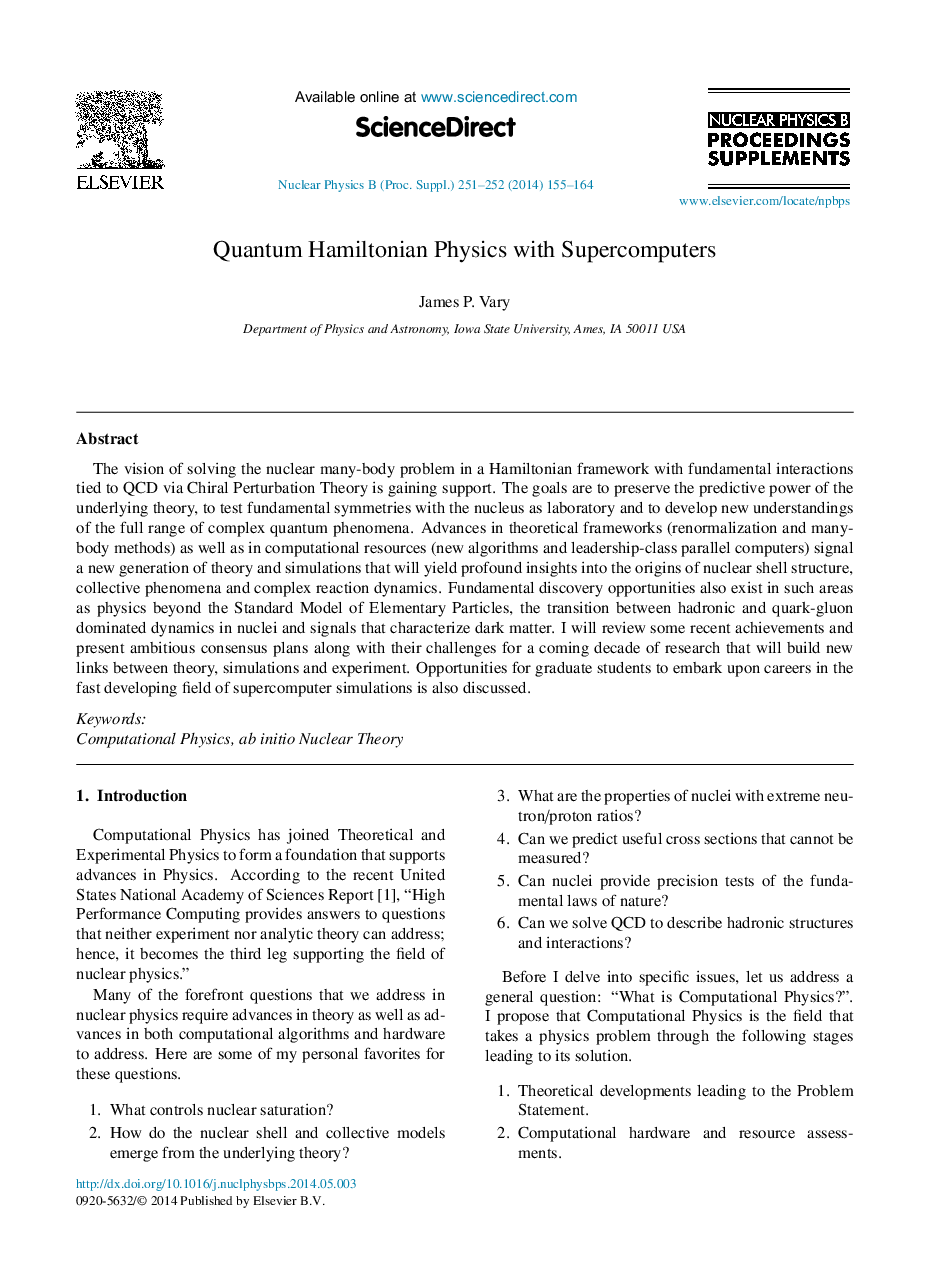| Article ID | Journal | Published Year | Pages | File Type |
|---|---|---|---|---|
| 1848506 | Nuclear Physics B - Proceedings Supplements | 2014 | 10 Pages |
The vision of solving the nuclear many-body problem in a Hamiltonian framework with fundamental interactions tied to QCD via Chiral Perturbation Theory is gaining support. The goals are to preserve the predictive power of the underlying theory, to test fundamental symmetries with the nucleus as laboratory and to develop new understandings of the full range of complex quantum phenomena. Advances in theoretical frameworks (renormalization and many-body methods) as well as in computational resources (new algorithms and leadership-class parallel computers) signal a new generation of theory and simulations that will yield profound insights into the origins of nuclear shell structure, collective phenomena and complex reaction dynamics. Fundamental discovery opportunities also exist in such areas as physics beyond the Standard Model of Elementary Particles, the transition between hadronic and quark–gluon dominated dynamics in nuclei and signals that characterize dark matter. I will review some recent achievements and present ambitious consensus plans along with their challenges for a coming decade of research that will build new links between theory, simulations and experiment. Opportunities for graduate students to embark upon careers in the fast developing field of supercomputer simulations is also discussed.
